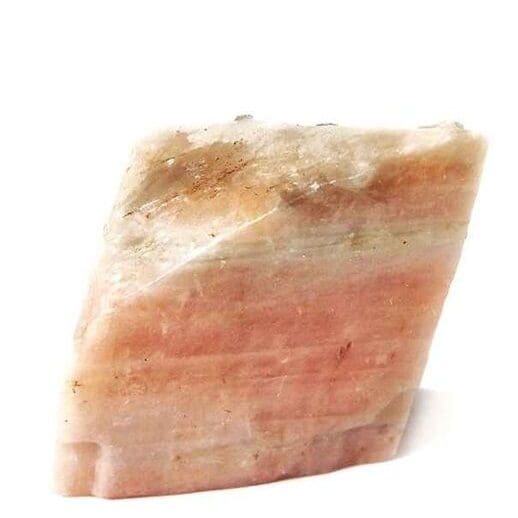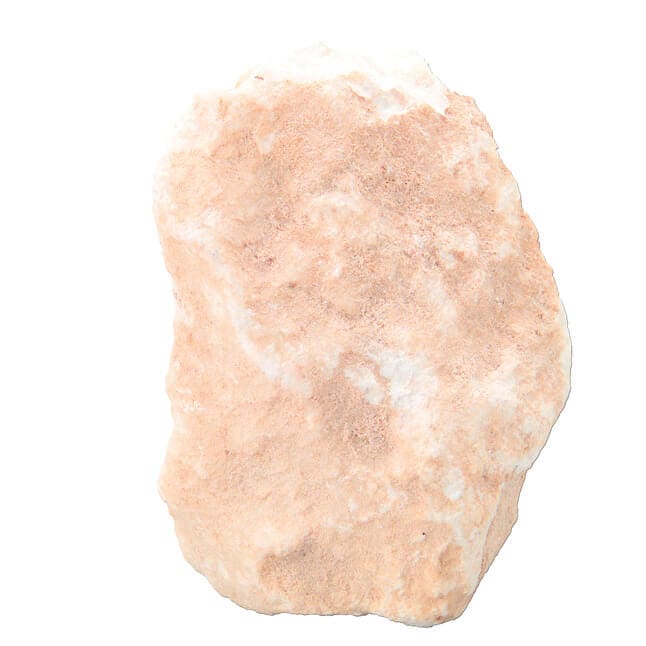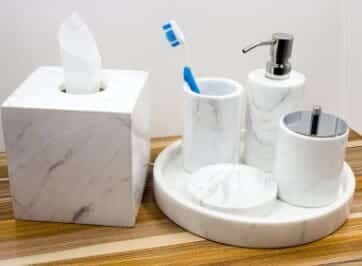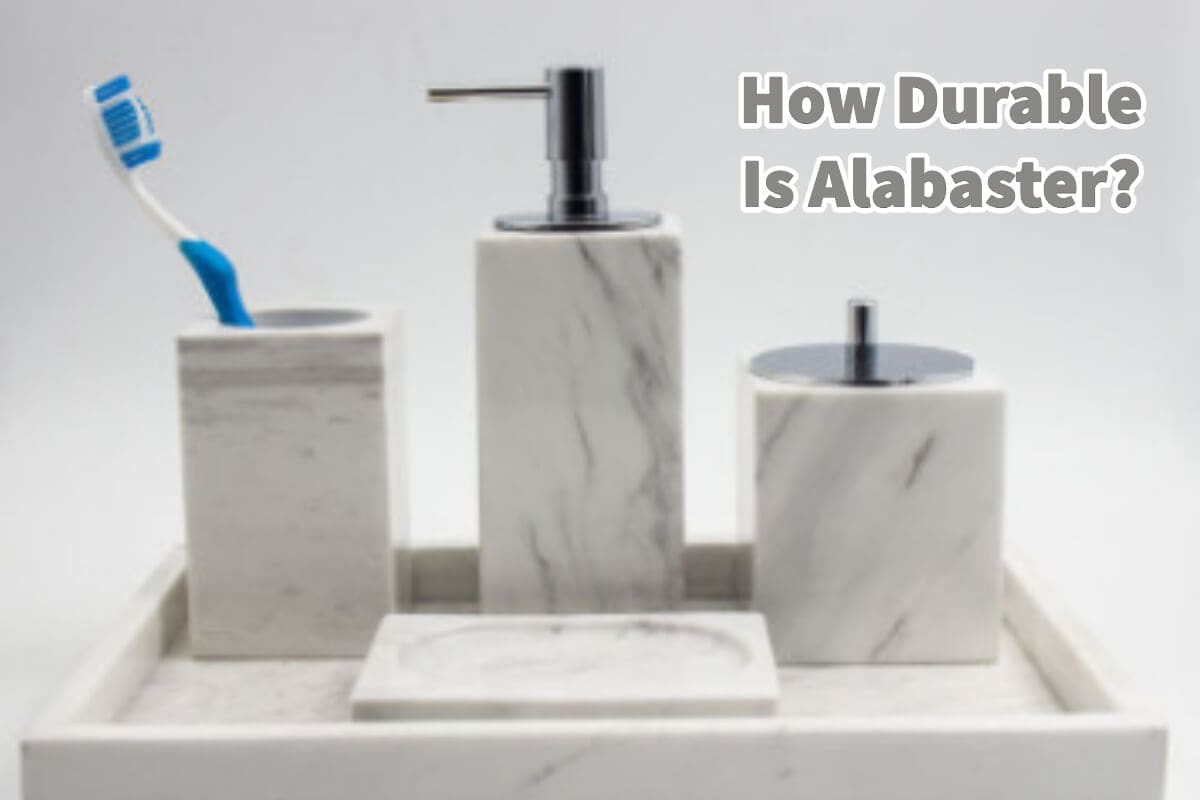Alabaster is a material that many artists and home decor designers like to use for their products. But one question that many people want to understand is if alabaster is durable.
Alabaster is usually considered a soft stone, and it is not as durable as other stones, such as marble. Some types of alabaster can be pretty soft, and you can even scratch them with your fingernail. Alabaster is also not suitable to be used outdoors and can only be used indoors. Alabaster is an ancient stone used throughout Europe and the Middle East.
Table of Contents
- Alabaster’s Durability Defined
- Types Of Alabaster Explained
- Alabaster As A Marble Imitation
- Frequently Asked Questions
- Related Content
Alabaster’s Durability Defined
Alabasters is a mineral or rock that is considered if be quite soft. Because it is soft, it can be used for carving or is processed for plaster powder.
Alabaster is a much softer material than other stones, which can be as hard as marble. That is why it is sometimes used for carving, as it is easier to work with than other hard materials.
Here are some qualities of the durability and hardness of alabaster:
- Easy To Work With – Alabaster has been a preferred stone for centuries because it is relatively easy to work with. It will be easier for stone carvers to carve alabaster stone than other minerals or rocks. The carver needs alabaster readily cut and polished with the simplest tools.
- Slightly Soluble In Water So Can Only Use Indoors – Alabaster a slightly soluble in water which means it is not suitable for outdoor use but only for indoor use.
- Excellent Surface – Alabaster provides an excellent surface treatment as you do not need to prime any surfaces. This is another reason it could be a popular choice for many artists.
As you can see from this list, alabaster has been preferred to be used for centuries as it is easy to work with, but it is not a stone that is suitable for any product or design that needs to be outdoors.
Ancient artists used marble to carve their outdoor statues and never used any alabaster. Alabaster does not have the durability to last outdoors.
But if you use alabaster for something indoors, it will be very durable, and you will not have any problems or issues with it. That is why alabaster is typically a stone or has products for indoor use.
Types Of Alabaster Explained
There are several types of alabaster that have similar properties.
Calcite Alabaster
Calcite alabaster is found in the Middle East, including Egypt and Mesopotamia. This calcite type of alabaster is also known as Onyx-marble, Egyptian alabaster, and Oriental alabaster.

The name Onyx-marble can be quite misleading as alabaster has very different properties than the onyx marble minerals. Both the onyx and marble are much harder stones than alabaster.
The calcite alabaster usually has stalagmitic limestone marks with swirling bands of cream or brown patterns, especially for the ancient alabaster used in the Middle East. Some alabaster can also be snow white.
Calcite alabaster has the hardest strength of alabaster; It cannot be easily scratched when touched but can be easily carved with a knife.
Because calcite alabaster is relatively durable, especially for indoor use, many ancient artifacts today have used calcite alabaster.
Gypsum Alabaster
Gypsum alabaster is an alabaster that has been found mainly in Europe. It is fine-grain gypsum used for centuries for carvings and other ornamentation.

It is usually Snow White and translucent but can also be artificially dyed It may be made to look like marble when heat treated.
Gypsum alabaster has a Mohs hardness test of 1.5 to 2. Gypsum alabaster can be so soft that a fingernail can sometimes scratch it. Gypsum alabaster is usually a much softer alabaster than calcite alabaster.
Alabaster As A Marble Imitation
Alabaster can sometimes be used as a marble imitation; this can sometimes be confusing because some alabaster if treated properly, can look like marble. Alabaster is known to be a type of marble imitation.

To remove the alabaster’s transparency and make it look like marble, the stone can be immersed in water and then heated gradually, nearly to the boiling point.
The heating process requires great care because you cannot overheat the alabaster but have to heat it just right.
The effect of heating the alabaster partly dehydrates the alabaster, closely resembling actual marble. The type of alabaster was known as ”Marmo di Castellina.”
Alabaster is a beautiful stone; we can manufacture alabaster for bath accessories or lighting. When used correctly, it can be an excellent stone for many applications in the Home Decor and Home Furniture Industry.
fI you are interested in what type of alabaster products Mondoro Company can produce, we would love to talk to you. We have some magnificent bathroom sets that are made in natural alabaster stone.
Find out more about how Mondoro can help you create, develop, and manufacture excellent home decor and home furniture products – don’t hesitate to contact me, Anita. Check out my email by clicking here or become a part of our community and join our newsletter by clicking here.
Mondoro gives out a FREE Lookbook to anyone interested. You can receive a copy of our latest Lookbook by clicking here.
Listen to our Podcast called Global Trade Gal. You can find it on all major podcast platforms. Try out to listen to one of our podcasts by clicking here.
Subscribe to our Mondoro Company Limited YouTube Channel filled with great videos and information by clicking here.
Frequently Asked Questions
What is alabaster?
Alabaster is a type of stone that is commonly used in sculpting and decorative art. It is known for its softness and translucent appearance.
Is alabaster a durable stone?
No, alabaster is not as durable as other stones like marble. It is relatively soft and can be easily scratched, even with a fingernail.
Can alabaster be used outdoors?
No, alabaster is not suitable for outdoor use. It is vulnerable to weathering and can be damaged by exposure to moisture and harsh elements.
Where is alabaster commonly used?
Alabaster has been used throughout Europe and the Middle East for centuries. It has been utilized in architecture, sculptures, and decorative items.
What are the properties of alabaster?
Alabaster is known for its softness, translucency, and delicate appearance. It often has a smooth texture and can be carved or sculpted with relative ease.
Can alabaster be polished?
Yes, alabaster can be polished to enhance its appearance. Polishing helps to bring out the stone’s natural translucency and creates a smooth, glossy surface.
Is alabaster a common material in modern construction?
No, alabaster is not commonly used in modern construction due to its softness and limited durability. It is primarily employed in artistic and decorative applications.
Are there different types of alabaster?
Yes, there are different types of alabaster, each with its own characteristics. Some varieties are softer than others, while some may have unique colorations or veining patterns.
Related Content
How Can You Tell If Alabaster Is Real?
There are ways you can check if your alabaster is genuine or imitation alabaster. One of the main ways is through the thickness of the alabaster. The other way is by looking at the vein lines; there should be random and translucent vein lines on the genuine alabaster. The randomness of the vein lines will be very different than the imitation alabaster.
You can discover more by reading How Can You Tell If Alabaster Is Real? by clicking here.
What is Alabaster? Alabaster for Home Decor Product Development
Alabaster is known as medium-hard gypsum or calcite mineral that is usually white and translucent and has a fine uniformed grain. When Alabaster is put up to the light, you can see the small fine natural grain of the stone. As Alabaster is a porous mineral, it can be dyed in various colors.
You can discover more by reading What is Alabaster? Alabaster for Home Decor Product Development by clicking here.
Earthenware, Stoneware, and Porcelain Materials
Earthenware, stoneware, and porcelain are all made by various clays and then fired. The kind of clay used and the temperature they are fired at can make a difference as to how soft or hard the actual end product is. Though they can all seem to be similar, they are all very different materials and products.
You can discover more by reading Earthenware, Stoneware, and Porcelain Materials by clicking here.

